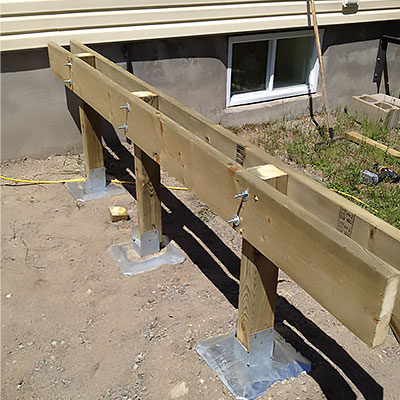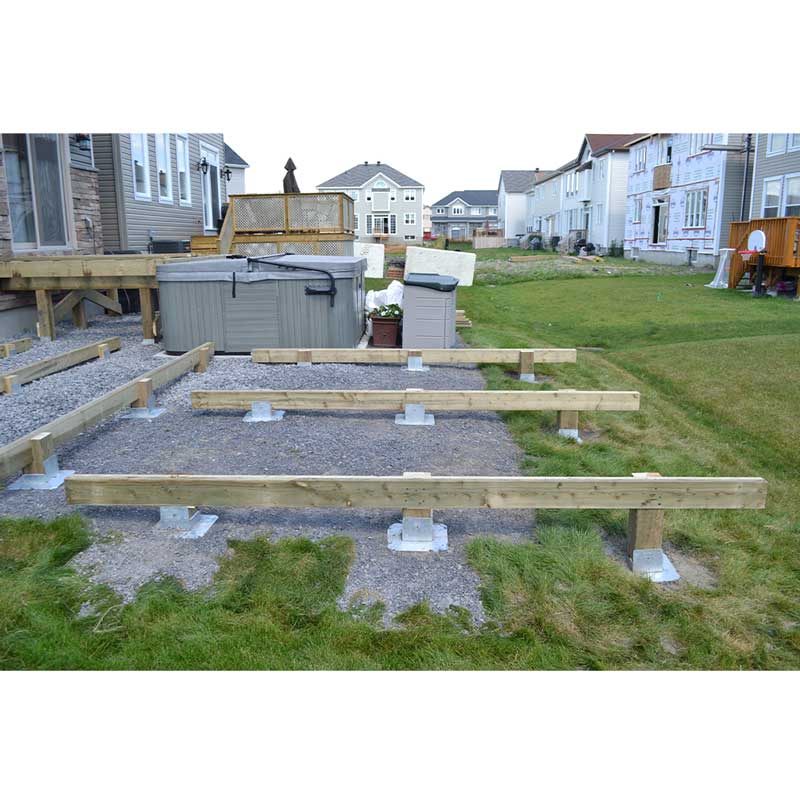Expert Tips for Installing Deck Footings to Assistance Your Outdoor Space
When it involves constructing a deck, one of the most essential aspects to take into consideration is the installation of appropriate grounds. These grounds are the structure upon which your exterior area will relax, providing stability and assistance for many years to find. However exactly what does it take to set up deck footings correctly? In this conversation, we will check out experienced suggestions and strategies that can assist make certain a sturdy and effective deck installation. From selecting the appropriate kind of footings to preventing common blunders, we will supply you with the understanding and insights you need to confidently start your deck-building journey. So, let's dive right in and find the secret to a durable and solid outside area.
Value of Proper Deck Footings
Appropriate deck footings are necessary for making sure the security and durability of your outdoor area. Without strong and correctly mounted grounds, your deck may become unsteady, leading to safety and security dangers and pricey fixings.

In enhancement to security, proper deck grounds also add to the longevity of your outdoor room (Deck Footings). Footings that are made and created to withstand the aspects and dirt conditions in your area will certainly assist prevent the deck from moving or settling gradually. By guaranteeing the grounds are correctly sized and mounted, you can lessen the risk of damage to the deck framework, expanding its lifespan and decreasing the demand for pricey fixings or substitutes

Selecting the Right Sort Of Grounds
When picking the proper kind of grounds for your deck, it is necessary to take into consideration elements such as dirt conditions, neighborhood structure codes, and the general layout of your exterior area. The kind of footing you select will play an essential function in making certain the stability and longevity of your deck.
One common kind of ground is the concrete footing. Concrete footings are suitable for most soil conditions and supply outstanding support for decks. They are generally installed listed below the frost line to avoid shifting and clearing up as a result of cold and thawing cycles. Another option is helical piers, which are excellent for areas with unpredictable soil or high water tables. These piers are screwed into the ground and provide strong assistance for the deck.
In many cases, you may need to make use of specific footings, such as pile grounds or deep structures, if you are developing a multi-level or big deck. These footings are developed to disperse the weight of the deck over a bigger location, making sure security and preventing sinking or settling.
Before choosing a kind of footing, it is important to speak with regional building ordinance and guidelines to make sure compliance. Furthermore, consider the style and intended use of your outside room. Variables such as the dimension, shape, and load-bearing demands of your deck will affect the type of footing that is most suitable.
Preparing the Ground for Footing Setup
To effectively prepare the ground for footing installation, it is crucial to assess the dirt problems and take needed steps to make sure security and resilience of the deck. The first step is to excavate the area where the footings will be installed.
When the location has been dug deep into, the following action is to compact the dirt. This can be done making use of a plate compactor or by utilizing a hand tamper. Condensing the soil aids to eliminate any gaps or air pockets, which can bring about working out and instability navigate to these guys with time.
After compacting the soil, it is essential to lay a layer of gravel or smashed rock at the base of the excavation. This will supply drain and help to avoid water from pooling around the footings, which can bring about erosion and instability.
Step-by-Step Guide to Installing Deck Footings
After effectively preparing the ground for footing installment, the following step is to start the process of setting up deck grounds. This detailed overview will provide you with a clear understanding of exactly how to set up deck grounds for your outside space.
Identify the place: Begin by noting the placements of the deck footings making use of stakes and string. Make sure that the locations line up with the design and format of your deck.
Dig the holes: Utilize a post opening miner or an auger to dig the openings for the grounds. The depth and size of the openings need to be in accordance with local building regulations and the certain demands of your deck design.
Degree the holes: Utilize a degree to make sure that the holes are dug to the appropriate deepness and are degree with each various other. (Deck Footings)
Include crushed rock: Area a layer of gravel at the end of each hole to improve drain and stop the wood from rotting.
Put the footings: Position the footings right into the holes, making certain discover this info here they are degree and plumb. Make use of a degree and a gauging tape to make certain accuracy.
Secure the grounds: Put concrete right into the holes around the footings, filling them to the top. Use a message degree to make certain the footings remain level as the concrete collections.
Enable time for healing: Let the concrete cure according to the manufacturer's guidelines prior to waging the deck building and construction.
Usual Blunders to Avoid Throughout Footing Installation
One crucial facet to think about during the installation of deck footings is preventing typical errors that can jeopardize the security and longevity of your exterior room. While deck grounds may appear like a straightforward and simple component of the building process, overlooking certain elements can result in costly fixings and prospective security dangers down the line.

Additionally, ignoring to install correct drainage actions can trigger water to gather around the footings, bring about rot, degeneration, and the eventual weakening of the deck's structure. Making use of the wrong type of footing product or stopping working to appropriately secure the grounds can endanger their structural integrity.
To prevent these blunders, it is necessary to seek advice from with a specialist or follow market standards to make certain proper footing setup. By doing so, you can make sure the security and longevity of your outside area, giving a delightful and safe atmosphere for years to come.
Final Thought
Finally, installing appropriate deck footings is important for the stability and long life click for info of your outside space. By picking the best kind of grounds and appropriately preparing the ground, you can make certain a strong structure for your deck. Adhering to a detailed overview and preventing typical errors during footing setup will even more enhance the sturdiness and security of your deck.
Proper deck footings are essential for guaranteeing the stability and longevity of your exterior room. The grounds serve as a connection in between the ground and the deck, permitting the weight of the deck and its passengers to be spread uniformly into the soil.One common kind of ground is the concrete ground. Insert the footings: Put the grounds right into the openings, making certain they are degree and plumb. Protect the footings: Pour concrete right into the openings around the grounds, loading them to the top.